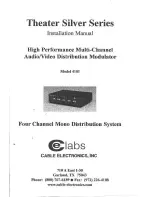
2: TVM and Amortization Worksheets
29
Notes about TVM and Amortization Worksheets (cont.)
♦
Enter values for
PV
,
PMT
, and
FV
as negative if they are
outflows (cash paid out) or as positive if they are inflows
(cash received). To enter a negative value, press
S
after
entering the number.
♦
Enter
I/Y
as the nominal interest rate. The TVM worksheet
automatically converts
I/Y
to a “per period” rate based on the
values for
P/Y
and
C/Y
.
♦
When you enter a value for
P/Y
, the same value is
automatically entered for
C/Y
. (You can change
C/Y
.)
♦
The
END
/
BGN
setting lets you specify whether the transaction
is an ordinary annuity or an annuity due.
<
In ordinary annuities, the payments occur at the end of
each payment period. Most loans are in this category. For
ordinary annuities, select
END
.
<
In annuities due, payments occur at the beginning of each
payment period. Most leases are in this category. For
annuities due, select
BGN
.
♦
Pressing
%
when
P1
or
P2
is displayed updates
P1
and
P2
to
represent the next range of payments.
♦
A computed value for
BAL
after a specified number of
payments may be slightly different than a computed value for
FV
after the same number of payments.
<
When solving for
BAL
,
PRN
, and
INT
, the calculator uses
the
PMT
value rounded to the number of decimal places
specified by the decimal format.
<
When solving for
FV
, the calculator uses the unrounded
value for
PMT
.















































